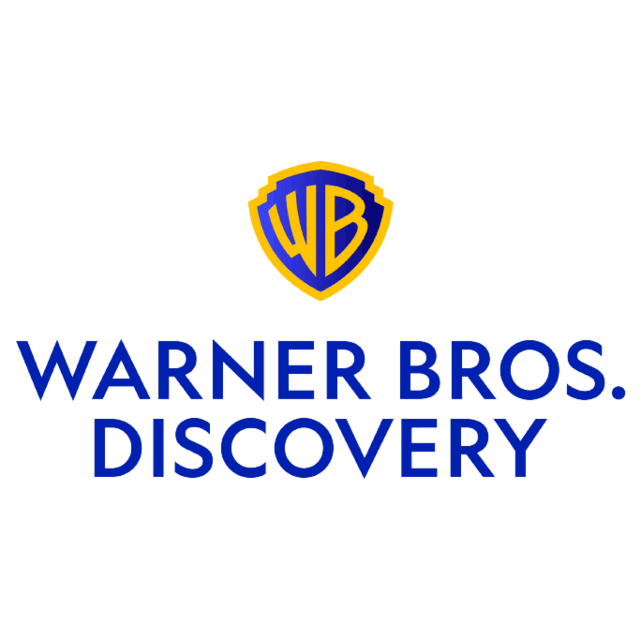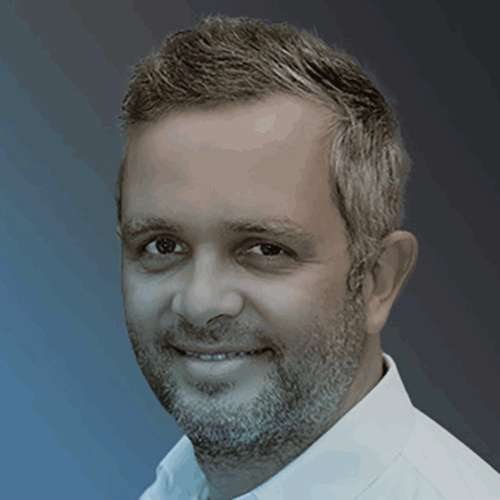In The Sandbox Metaverse, Pretty Much Everything (Including The Limited Parcels of Land) is an NFT
In a recent interview at the NFT.NYC conference in Manhattan, BlockchainJournal.com editor-in-chief David Berlind chats with Nicola Sebastiani, Chief Content Officer of The Sandbox. The Sandbox is a Roblox/Minecraft-style metaverse platform where pretty much all of the assets within, including the land itself, are blockchain-based NFTs that can be bought, sold, and traded on the secondary market. While much of the user experience found within The Sandbox is gamified (similar to that of Roblox and Minecraft), the virtual world platform is actually capable of a diverse range of experiences in music, entertainment, and B2C engagement thus serving as a vehicle for big brands and enterprises to launch their own metaverse experiences.
Sebastiani emphasized The Sandbox's unique proposition as a metaverse provider, enabling brands to create their own immersive experiences within a branded virtual world. Through partnerships and Sandbox-specific tools like Game Maker and VoxEdit, The Sandbox empowers brands to build tailored experiences, whether it's gaming, virtual concerts, learning environments, or museums. These experiences are interconnected within The Sandbox's metaverse, allowing users to travel from one brand's virtual experience to another completely unrelated experience without much friction.
Blockchain technology plays a pivotal role in The Sandbox ecosystem, with virtual land, avatars, and assets being represented as NFT tokens. Additionally, The Sandbox facilitates occasional primary land sales within the platform (of which there will be a finite number), leaving secondary market transactions to occur externally on NFT marketplaces like OpenSea. Notable brands like Gucci, Warner Music, and The Walking Dead are among the 400 entities already leveraging The Sandbox's metaverse for immersive experiences.
(The full-text transcript appears below.)
Published:April 16, 2024

11 min read
Audio-Only Podcast
Full-text transcript of David Berlind's Interview with Nicola Sebastiani, Chief Content Officer of The Sandbox
David Berlind: Today is April 3rd, 2024. I'm David Berlind, and this is the Blockchain Journal podcast coming to you from NFT.NYC. A big conference taking place on the West Side of Manhattan in New York City, at the Jacob Javits Center. It's a conference that's all about NFTs, an annual conference; And standing with me is Nicola Sebastiani. He's the chief content officer at a fairly big player in the blockchain business, The Sandbox. So, Nicola, thanks very much for joining me here on the Blockchain Journal podcast.
Nicola Sebastiani: Amazing. Thank you for having me.
Berlind: Yeah, it's great to have you. And, by the way, for those of you who are watching, we'll put up some QR codes right after this interview so you can connect with Blockchain Journal, you can connect with me, and you can connect with Nicola.
So, we've been following The Sandbox for a couple of years now on Blockchain Journal, but we haven't actually had a chance to meet with you guys and find out what you're all about and help our listeners and our audience understand what The Sandbox can do for big enterprises and big brands. So, let's start there. What is The Sandbox?
Sebastiani: Amazing. So, The Sandbox is a metaverse platform. Essentially, you have a large map with [a] variety of plot[s] of land, all of those are NFT[s] and users can connect through those plot[s] of land and enter The Sandbox, essentially accessing a variety of different experiences in music, in entertainment, [and] in gaming - anything you can think of. It is a great way for brands to access the metaverse, to access a metaverse-friendly Web3 UGC (user-generated content) friendly audience, and to express themselves in different ways than the traditional media.
Berlind: OK. When we talked a lot of other companies, a lot of them are NFT platforms. You're the first metaverse platform that we're talking to, and the idea of a metaverse is kind of scary, because a lot of big brands and enterprises have never heard of the metaverse - [they] may have heard of it on TV or something like that. so. Sandbox essentially is a metaverse provider, like a third-party provider that they can turn to these big brands and enterprises. To build their own metaverse, their own branded metaverse, an immersive experience that their customers can enter and explore, and maybe get to understand the brand a little bit better through a virtual world.
Sebastiani: Yes, I will say we are our own metaverse, and I can envision a future where there's a few dominant metaverses like there's a few dominant megacities in the world, and within hours, you can then join a neighborhood dedicated - for example, to your favorite brand like Lacoste or your favorite artist like Snoop Dogg - and experience one or a variety of digital moments tied to him or them.
Berlind: OK, so let's say I'm Snoop Dogg. I wish I was Snoop Dogg, but I'm not. OK. Or, I was the CEO or chief marketing officer at Lacoste. I would go to The Sandbox – that's the name of your company – I would go to you and I would set up some land, some branded land, and build this immersive experience. How do I go about doing that?
Sebastiani: Yeah, you will contact us. You will likely acquire one or more plots of land from us, and then you will build on it. We can help [you] build. We have a proprietary studios. We have over 200 trusted partners that can build for you might even want to learn to build internally through your teams or directly. And then, you will build one or more experiences tied to the identity of the artist or of the company. As I said, one can be gaming, one can be about learning, one can be a virtual concert, even. Through all that, you have a way to outreach to your players and to your users, and to your fans, and to have... and also a way for them to interact with each other in your community in a completely different way.
Berlind: OK, so big brands can build these very virtual and immersive experiences, and they can be a variety of types. It could be a game of some sort, it could be, as you said, a virtual concert, [it] could be just about anything. A museum. We could take a tour around a museum. That's I think that's something that you could do. So, where does blockchain come in? What's the role of blockchain in all of this?
Sebastiani: Well, first, our land, our NFT tokens that you can own, resell and keep expanding. Our avatars and a lot of the assets that we offer are NFT tokens. And finally, we are powered by our own token, SAND, which is one of likely the most important token[s] out there in blockchain and Web3.
Berlind: OK. So, you talked about a variety of different asset types like avatars. So, let's say I decide that I'm going to... I'm a big brand, and I want to set up some land. I'll come to you, and I would buy a plot of land, and I would start to build my virtual experience. I'm assuming you provide the tools to do this?
Sebastiani: We have a no-code... 2 no-code tools, actually. The Game Maker is to build experience, and VoxEdit to build the assets and avatars.
Berlind: VoxEdit. That's V-O-X-E-D-I-T. OK, great. So, people can serve themselves. But, you said... you mentioned earlier that you also have partners that can - like resellers or whatever - who can build it for you. Basically, the equivalent of systems integrators that enterprises are already familiar with. So, I build one of these experiences... Or, I buy some land from you. I can buy one plot of land, two plots, how does that work?
Sebastiani: You can buy one to many. We can... You can buy them in the secondary market. You can buy them directly. We're continuously running land sales. I believe now we have one tied to Korea, for example. And, based on the land you buy, you will be in [a] certain neighborhood, associated with brands, entities, or artists that probably share something with you.
Berlind: OK, so there's areas of common interest, multiple plots of land around some common interest like music, or maybe automobiles, or something like that. I'm starting to get an idea of this. So, I'm a big car company and I buy a plot of land. That's going to be mixed in with a lot of the other car manufacturers. And, when I create this virtual experience using your tools or have somebody created for me, then what do I do? I invite my customers, people who buy my cars to come and experience this more immersive virtual digital experience within The Sandbox?
Sebastiani: Well, not only that, right? Hopefully, you will also benefit from our existing community. We likely will run events with SAND as an award for players. So, there's many ways. The idea is: yes, you connect to your existing fans through this, but also, we bring you new fans that are very particular, very interesting that have our cutting edge as far as tech and that are globally distributed, particularly in Asia and in the United States.
Berlind: Because, there's two entry points. If I'm, again, a car company, I would probably invite my customers, maybe my prospects through some link or something to go directly into my land, but then once you're in The Sandbox, you can kind of roam around and skip around between different lands?
Sebastiani: Yes. Then once you finish with an experience, you're free to go experience more. Some people decide, for example, to just focus on a few experience[s] that they really like and reengage over and over. This is most likely for games or if you are super passionate about a certain museum and you want to keep revisiting. But otherwise, yes, you skip from one to the other.
Berlind: I'm starting to get the idea here because here in the US, in a lot of major metropolitan areas, there's something that's called the automobile mile, and for some reason, a bunch of car dealerships have decided that they're going to build themselves all within10 city blocks of each other. And so, you've got Chevrolet, and you've got Toyota, and you've got Mazda. They're all next door to each other. It may not be related to each other in any way, but people will go to this area and roam around when they're shopping for a car. It sounds to me these plots of land in [The] Sandbox, they have essentially... You're creating the virtual version of this where people can roam around. So, this goes back to that point that you made. It's not only for the customers of the brand, but it's also for people who might be wandering around and be a means of introducing new people to the brand if they're coming from a neighboring plot.
Sebastiani: Yeah, I agree. And also, maybe you and I believe that a plot of land that is tied to Warner Music is going to be particularly valuable. So, we want to buy in that area even if we have nothing to do with music, right?
Berlind: So, it's the same sort of rules of real estate - the high-price real estate, I'm assuming. Because you said the land comes as an NFT, so that means that if I own a piece of land as an NFT, I can actually sell it on the secondary market. My land, if it happens to be next to Warner Brothers, might be more valuable than land that's next to some brand that nobody's ever heard of.
Sebastiani: Exactly. It will get more visibility and also as The Sandbox evolves as a platform and as a tool, it [is] likely going to gain more features.
Berlind: OK, lots of assets. The land itself is an NFT. You talked about avatars. I'm assuming if there's games or, art exhibits, the items within those games, weapons, or the art hanging on the wall can be NFTs as well. They are sold on the primary market when the land is first established or the experience is first established. Then that stuff can be sold on the secondary market. So, this all requires public blockchain if it's NFTs. What chain are you [on]?
Sebastiani: We're on Layer 2 on Polygon.
Berlind: You're on Polygon, OK, great. So, this...Now do people... Can they bring their own wallets? Do you offer a wallet for them? How does that work?
Sebastiani: It's... You need to be... You can connect a variety of wallet[s] to your Sandbox account.
Berlind: OK, so people have to bring their own wallets, and once they do that, that's how they would engage in... Do you have a marketplace where people can sell all the stuff on the secondary market? Or do they have to go outside of the platform to sell their NFTs on the secondary market, [on] something like OpenSea?
Sebastiani: Yeah, on the secondary market. You'd have to go outside of the platform for [that]. Our primary sales, they are run within the platform. We're also trying to make it as easy and accessible as possible for new users. So, we're trying to make the friction that comes by registering with the wallet as low as possible.
Berlind: OK. You mentioned Lacoste is one of the big brands that has land in in The Sandbox. Who are some other of the big brands that are out there?
Sebastiani: Gucci, Steve Aoki, Snoop Dogg, Warner Music, the Skybound [Entertainment] , The Walking Dead, you name it. We have, I believe, around 400 partners today across artists, museum[s], [and] big companies. Where we are, I think that brands and personality find us as a great entry point into the idea of the metaverse, both for our community, because I believe our team are really good at onboarding them, and really pays attention to the quality of the experience that is built, and because they believe in the long term project.
Berlind: And is there always land for sale on the primary market or do you like coordinate sales once every six months or something like.... Like if I went today, if I ran some big brand and I wanted to get some land, is there... Do I have to go buy it in the secondary market or do I go to you and will you build me a new block?
Sebastiani: We run a sale about every month, [a] month and [a] half for now, but the land is finite, so it won't last forever. I'd go right now.
Berlind: The land is finite. You guys are going to put a cap on it, and after that... So go now because if you get some land now and there's a finite amount of it, it could go up in price.
OK, well, listen, Nicola Sebastiani, chief content officer there at The Sandbox. Thanks very much for joining us on the Blockchain Journal podcast.
Sebastiani: Thank you so much.
Berlind: So, if you want to find more videos like this one, or you want to connect with Sebastiani, just hang on. I'm going to show some QR codes at the end of this video that will help you connect with Blockchain Journal not only our website, but our YouTube channel, which is at youtube.com/@blockchainjournal, and also there will be some QR codes to connect with Sebastiani and learn more about The Sandbox.
Thanks for joining us. We'll see you in the next video.















